A mobile podcast studio is a great way to create professional-quality podcasts without having to invest in expensive equipment or software. All you need is a smartphone or tablet and a few simple apps that can be downloaded for free. In this article, we’ll show you how to set up your own mobile podcast studio using just your device and some basic audio editing software.
Creating a mobile podcast studio is simple and affordable, and it gives you the flexibility to record your podcasts anywhere, anytime. So if you’ve ever wanted to start your own podcast but didn’t know where to start, this article is for you. Let’s get started!
Mobile Podcast Studio Overview
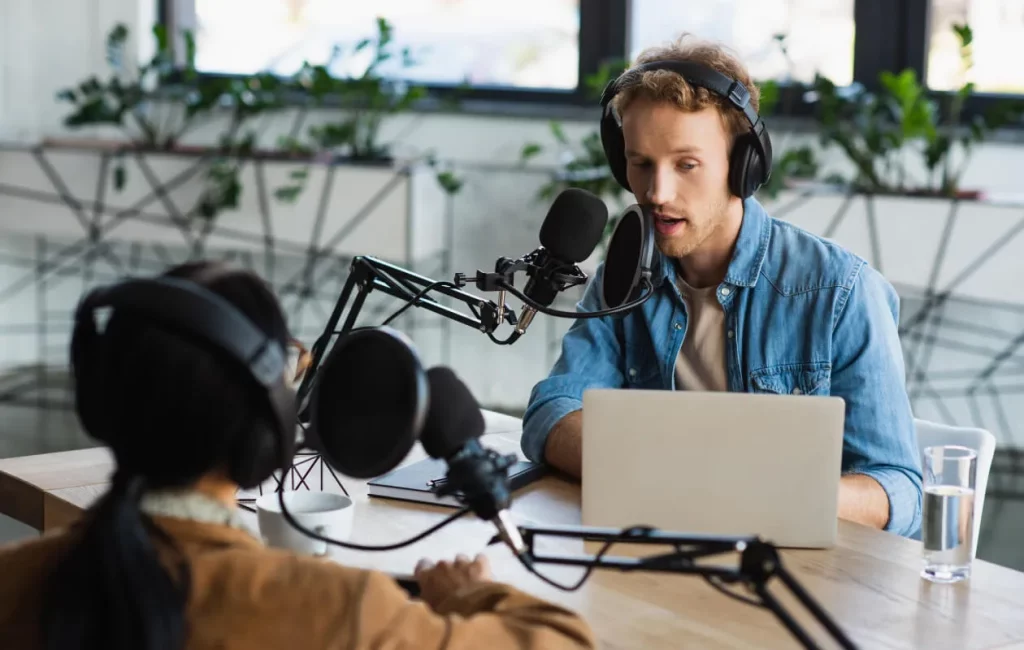
Are you looking to start a podcast but don’t know where to start? Check out our guide on how to prepare for your first show!
The first step is to make sure you have the right equipment. You’ll need a phone or computer that can record audio and a way to connect to the internet. If you’re using a phone, we recommend using a portable recorder like the Zoom H1n. This will allow you to record high-quality audio without using up all your phone’s battery life.
Once you have your recording equipment sorted, it’s time to start planning your show. What topics are you going to cover? Who will be your guests? How long will each episode be? It’s important to have a clear vision for your podcast before you start recording so that each episode is cohesive and engaging.
Once you’ve planned out your show, it’s time to start recording! We recommend doing a test recording first, just to get a feel for the flow of the conversation. Remember to hit the record button when you’re ready to start and to stop the recording when you’re finished.
If you’re happy with your test recording, it’s time to start publishing episodes! You can self-host your podcast or submit it to popular directories like iTunes and Stitcher. Whichever route you choose, make sure you promote your show so that people can find and listen to it.
The best way to prepare for a live podcast show is to rehearse the material as much as possible. This will help to ensure that the flow of the show goes smoothly and that there are no awkward pauses. In addition, be sure to have all of the necessary equipment ready to go, such as microphones, headphones, and audio cables. Finally, make sure to test the audio levels before going live to avoid any sound issues. By following these simple tips, you can be sure that your podcast show will be a success!
Equipment For Mobile Podcast Studio

When it comes to podcasting, there are many things to think about – from the content of your show to how you record and edit it. But one of your most important decisions is what equipment you use.
There are many different options for podcasting equipment, but it’s important to find something that works for you and your budget. If you’re just starting out, you don’t need to spend a lot of money on fancy equipment. In fact, all you really need is a good microphone and a way to record your voice.
If you want to get a little more sophisticated, there are a few other pieces of equipment you might want to consider, like headphones, a pop filter, and a portable recorder. But even if you don’t have all of those things, you can still create a great podcast with just a microphone and a recording device. So don’t let the cost of equipment stop you from starting your own podcast!
When starting a podcast, you will need some equipment. You will need a computer or device to record on, microphone(s), and audio editing software.
For your computer or device, you will want one that has a good recording quality. There are many options out there, so do your research to find the best one for you.
As for microphone(s), you will want to get one that picks up your voice well and doesn’t produce a lot of static. Again, there are many options available, so find the one that works best for you.
Finally, you will need audio editing software. This is where you will edit your podcast episodes and add any music or sound effects. There are many different programs out there, so find the one that fits your needs and budget. With this mobile podcast studio equipment, you will be able to produce high-quality episodes for your listeners to enjoy. So get started today and see how easy it is to get into podcasting!
Broadcast stereo
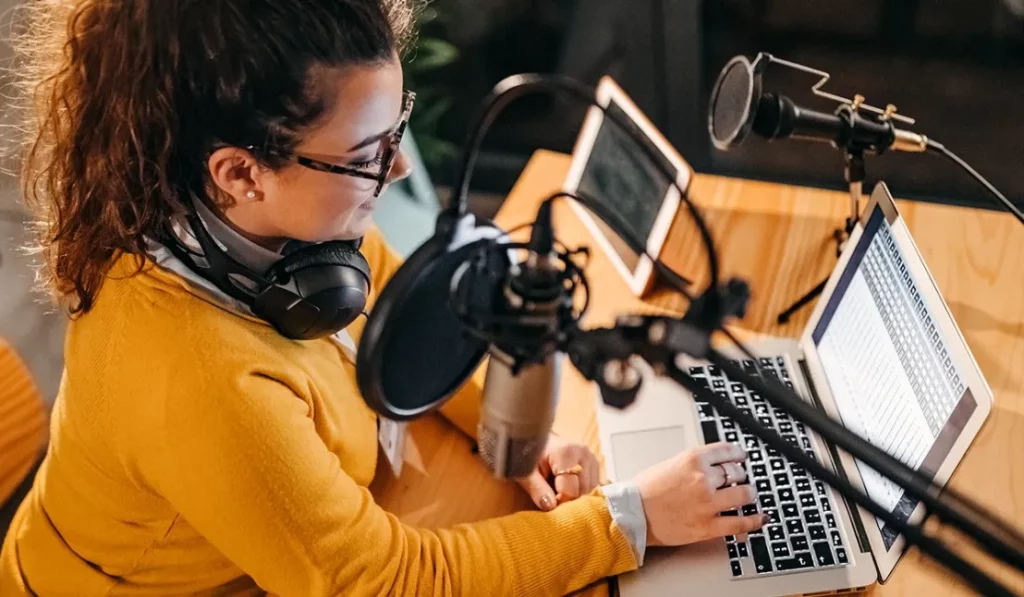
Broadcast stereo (also called wide stereo) is a technique employed in some FM radio and television broadcasts, as well as some recordings, to make the sound appear to come from wider sources. The effect is created by delaying the sound signals of the left and right channels by different amounts, then mixing them together. The result is that the brain perceives a wider “soundstage” than would be possible with monaural sound or conventional stereo.
Broadcast stereo can be used to create a sense of spaciousness or to give the impression that sounds are coming from beyond the edges of the speakers. It can also make voices and other sounds seem to “float” in the air rather than being anchored to the speakers.
Broadcast stereo is sometimes used to create a “3D sound” effect by combining it with other audio effects such as echo or reverb. This can make the listener feel as if the sounds of the broadcast surround them.
Recorder
The recorder is an app that allows users to record and share audio files. It’s simple to use and can be helpful for creating podcasts, recording interviews, or just capturing ideas. The app offers a variety of editing tools, including the ability to trim recordings, add music, and apply filters. Files can be shared via email, social media, or exported to other apps for further editing. The recorder is a free app with no ads or in-app purchases.
The recorder is an app that lets you record and edit podcasts on your iPhone. It’s easy to use, with a simple interface that makes it easy to create high-quality recordings. You can add music and sound effects to your podcast and even include interviews with guests. It also lets you share your podcasts with the world, so you can reach a wider audience.
If you’re looking for a mobile podcast studio, Recorder is a great option. It’s easy to use and lets you create high-quality recordings. You can also add music and sound effects and share your podcasts with the world. So if you’re ready to start podcasting, download Recorder today.
Audio Splitter
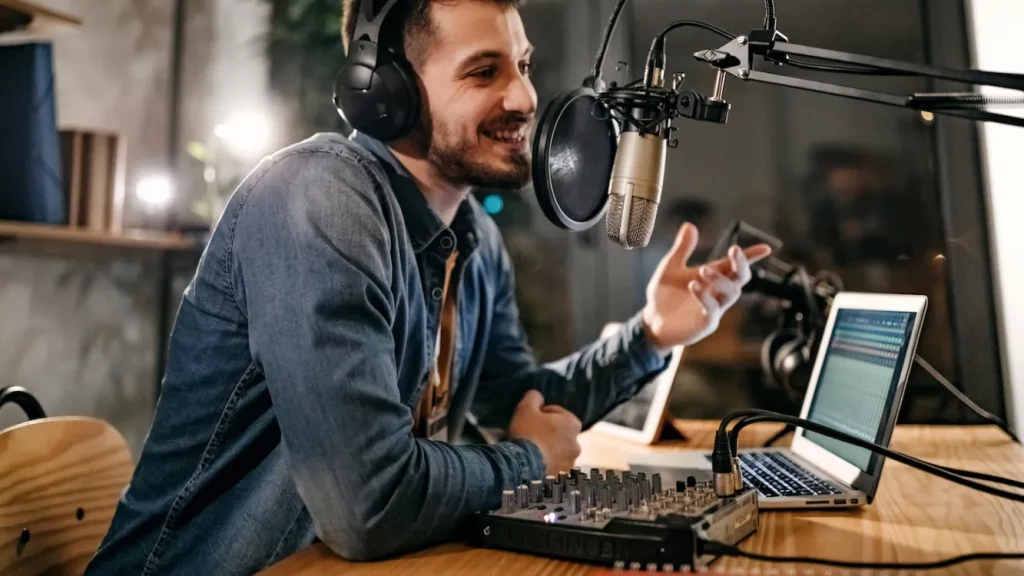
An audio splitter is a device that takes an input signal from a microphone, guitar, or other audio source and splits the signal into two or more output signals. This is useful for podcasting and other audio recording applications where you need to send a signal to two or more devices simultaneously.
There are a number of different audio splitters on the market, so it’s important to choose one that meets your needs. Some splitters will allow you to send a signal to multiple devices, while others will only allow you to send a signal to two devices. Make sure to check the specs of the audio splitter you’re considering before making your purchase.
Audio Splitter is an app that lets you split an audio file into two parts. This can be useful if you want to edit or remix a song or if you need to separate the audio track from a video. Audio Splitter is free and easy to use. Just open the app and drag the audio file into the main window. Then, click the split button and choose where you want to split the file.
Audio Splitter will then save the two parts as separate files. You can then use any audio editor to edit or remix the tracks. Audio Splitter is a great tool for anyone who needs to work with audio files.
Live Streaming Recording Options
There are a few different ways to live stream a podcast recording. One way is to use Skype or Google Hangouts. This is a great option if you have a small number of people who are recording the podcast. It’s also a great option if you want to record remotely. Another option is to use a platform like Livestream or Ustream.
This is a great option if you want to reach a larger audience. You can also use a service like Twitcam, which is designed specifically for live streaming podcasts. Whichever option you choose, make sure you test it out before you go live!
Podcasting is a great way to share your ideas and thoughts with the world. But what if you want to do a live podcast? How can you make sure your audience can hear you clearly? And what are your options for recording a podcast?
If you’re doing a live podcast, it’s important to make sure your audience can hear you clearly. One way to do this is to use a lavalier microphone. This type of microphone attaches to your shirt and is very small, making it perfect for podcasting on the go.
Another option for recording a podcast is to use a portable recorder. These devices are small and easy to use, and they allow you to record high-quality audio. You can also use a digital recorder, which is perfect for podcasting on the go.
Once you’ve recorded your podcast, you’ll need to edit it and add any music or sound effects you want. There are many software options for editing podcasts, so you’ll need to choose one that’s right for you.
Memory Card
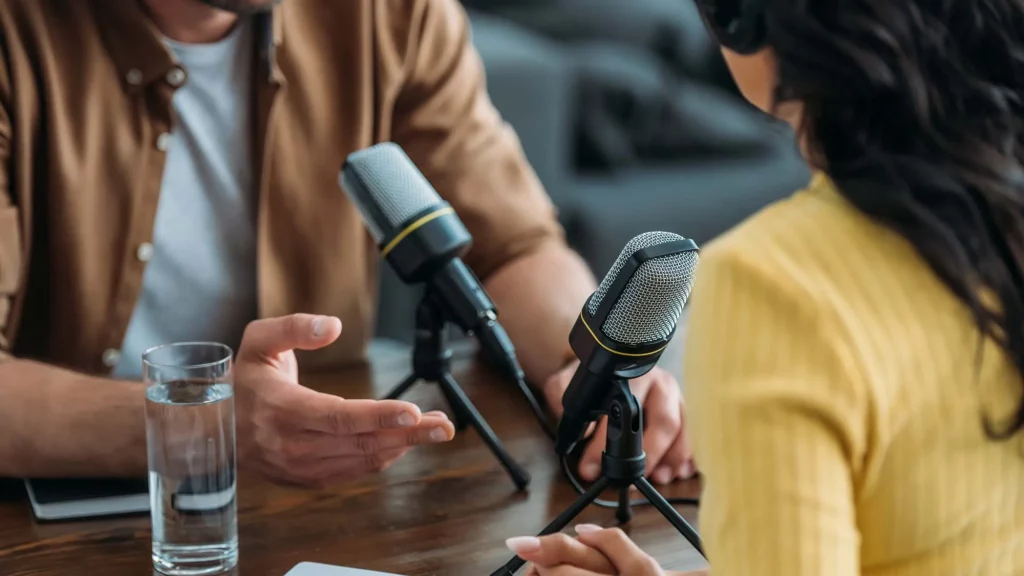
A memory card is a storage device used in portable devices such as digital cameras, mobile phones, and handheld gaming consoles. Memory cards come in a variety of sizes and are typically used to store photos, videos, music, and other data. They are also commonly used in mobile podcast studios to store audio files.
Memory cards offer a number of advantages over other storage devices, such as hard drives and flash drives. They are small in size, making them easy to carry around. They are also relatively inexpensive and can be easily swapped out when full. Most importantly, memory cards are designed for quick and easy transfer of data. This makes them ideal for storing audio files, which can be quickly transferred to a computer or other device for editing.
There are a few things to keep in mind when using memory cards for audio recording. First, choosing a card with a high capacity is important, as audio files can take up a lot of space. Second, it is important to format the card correctly before use.
Smartphone Podcasting
If you’re looking for a low-cost, mobile podcast studio, you can’t beat using your smartphone. With the right apps and accessories, you can create high-quality podcasts on the go. In this article, we’ll walk you through the basics of setting up a mobile podcast studio using your iPhone or Android smartphone.
First, you’ll need a good recording app. For iPhone users, we recommend the free app Ferrite Recording Studio. It’s a powerful app with features like editing and level control that will let you create professional-sounding podcasts. Android users can check out Easy Voice Recorder, another free app with similar features.
Once you’ve set up your recording app, you’ll need a way to mount your smartphone so you can record hands-free. A simple tripod will do the trick, or you can pick up a dedicated podcast mount like the Podcasters Studio Mount from IK Multimedia.
Finally, you’ll need a good microphone to get high-quality audio. The built-in microphone on your smartphone will work in a pinch, but you’ll want to invest in a dedicated podcasting microphone for the best results. The Rode Podcaster is a popular option, or you can go with something more affordable like the Blue Yeti Nano.
With the right recording app, mount, and microphone, you can create professional-sounding podcasts using nothing more than your smartphone. So get creative and start recording!
With the podcasting resurgence, more and more people are interested in creating their own shows. It’s never been easier to get started, thanks to the proliferation of smartphones. You no longer need a dedicated recording device; your phone can do the job quite nicely. This article will look at how to get started with podcasting using just your smartphone.
Smartphones are amazingly powerful devices, and they’re only getting more so. The latest generation of phones features ever-more-powerful processors, high-quality microphones, and large storage capacities. All of this makes them ideal for podcasting.
Getting started with smartphone podcasting is easy. The first thing you’ll need is a decent microphone. The built-in mic on your phone will work in a pinch, but for the best sound quality, you’ll want an external mic. There are many to choose from, ranging from simple USB mics to more sophisticated XLR models.
Once you have a microphone, you’ll need a recording app. There are many to choose from, but we recommend Garageband for iOS or Ferrite Recording Studio for Android. These apps are easy to use and offer a variety of features to make your podcast sound great.
Lighting For Mobile Podcast Studio
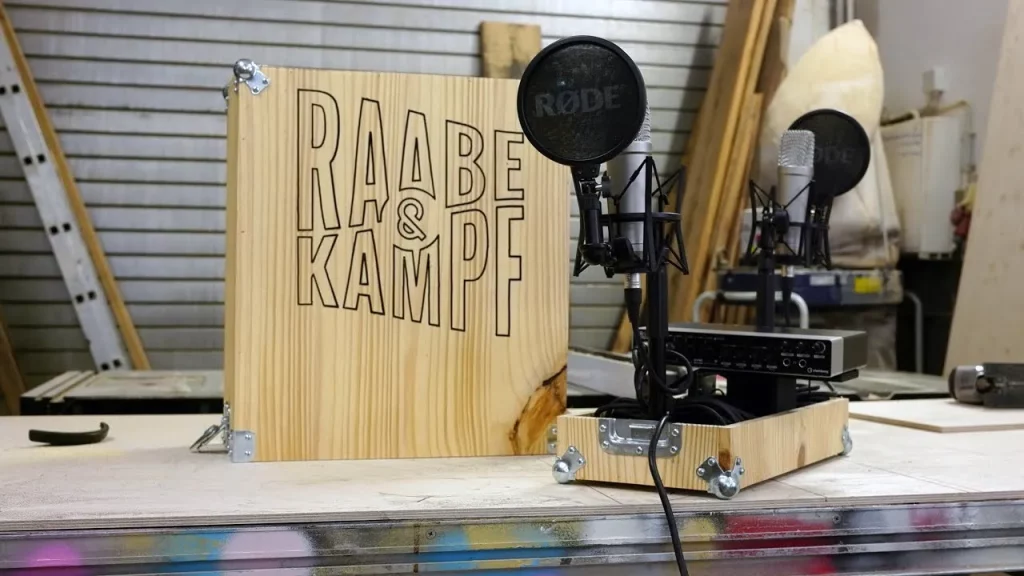
Studio lighting is an important part of any studio, whether it be for photography, videography, or podcasting. The right lighting can make or break a photo or video and can help to create a more professional look for a podcast.
When it comes to studio lighting for podcasting, there are a few things to consider. First, you’ll want to make sure that your lighting is evenly distributed and not too harsh. You don’t want your podcast guests to be squinting into the light or have shadows cast across their faces.
Second, you’ll want to consider the color of your studio lights. Some podcast hosts prefer to use white lights, while others prefer to use colored lights. Colored lights can add a bit of fun and personality to your podcast, but make sure that they don’t overwhelm or distract from the content of your show.
Finally, you’ll want to think about the placement of your studio lights. You’ll want to ensure they’re not in direct sight of your microphone, as this can cause reflections and other audio issues. You’ll also want to experiment with different heights and angles to see what works best for your particular podcast setup.
With a little bit of planning and experimentation, you can find the perfect studio lighting setup for your podcast. Just make sure to take your time and have fun with it!
Accessories For Mobile Podcast Studio
Podcast Studio Accessories are a must-have for any podcaster looking to take their show on the road. While many of the essentials – like a microphone and headphones – can be easily used with any smartphone or tablet, a few key pieces of gear can make a recording on the go a lot easier.
A good stand for your microphone is important, both for keeping it steady during recording and allowing you to use a pop filter (which can help reduce unwanted plosives). If you’re recording directly into your device, an external battery pack can be a lifesaver – there’s nothing worse than running out of power in the middle of a take. And a good set of headphones will help you monitor your levels and make sure you’re getting a clean recording.
With the right accessories, podcasting on the go can be a breeze – and with a little practice, you’ll be able to create professional-sounding episodes no matter where you are.
FAQs
What is a mobile podcast studio?
A mobile podcast studio is a compact, self-contained recording studio that can be used to produce professional-quality podcasts anywhere. It typically includes a microphone, audio interface, headphones, and software for recording and editing podcasts.
You will need a microphone, audio interface, headphones, and recording/editing software to set up a mobile podcast studio. You will also need to connect the audio interface to your computer. Once everything is connected, you can begin recording your podcast.
How does a mobile podcast studio work?
A mobile podcast studio is a great option for podcasters who want to take their show on the road. These studios typically consist of a small mixer, microphone, and recorder that can be easily transported and set up in any location. They’re perfect for recording interviews, podcast episodes, or live sessions.
Mobile podcast studios are designed to be portable and easy to set up. Typically, they include a small mixer, microphone, and recorder. This equipment can be easily transported and set up in any location, making them perfect for recording interviews, podcast episodes, or live sessions.
Mobile podcast studios offer a number of benefits for podcasters. They’re convenient and easy to set up, so you can record your podcast anywhere. They’re also great for recording interviews, live sessions, or other audio content.
What are some things to keep in mind when using a mobile podcast studio?
Make sure you have adequate storage space on your device for your recordings.
Be aware of your surroundings when recording and avoid making noise that could be picked up in the recording.
Remember that your recordings’ quality will likely be lower than if you were using a dedicated podcast studio.
Conclusion
Podcasting is a great way to connect with your audience and share your message. But until now, it’s been difficult to create a professional-quality podcast without expensive equipment or software. With the advent of mobile podcast studios like Bossjock Studio, that’s all changed. Now you can create high-quality podcasts on your phone or tablet, no computer required.
If you’re serious about podcasting, Bossjock Studio is a must-have tool. It’s packed with features that will help you create professional-sounding podcasts, including the ability to record multiple tracks, add effects, and more. And best of all, it’s very affordable.

